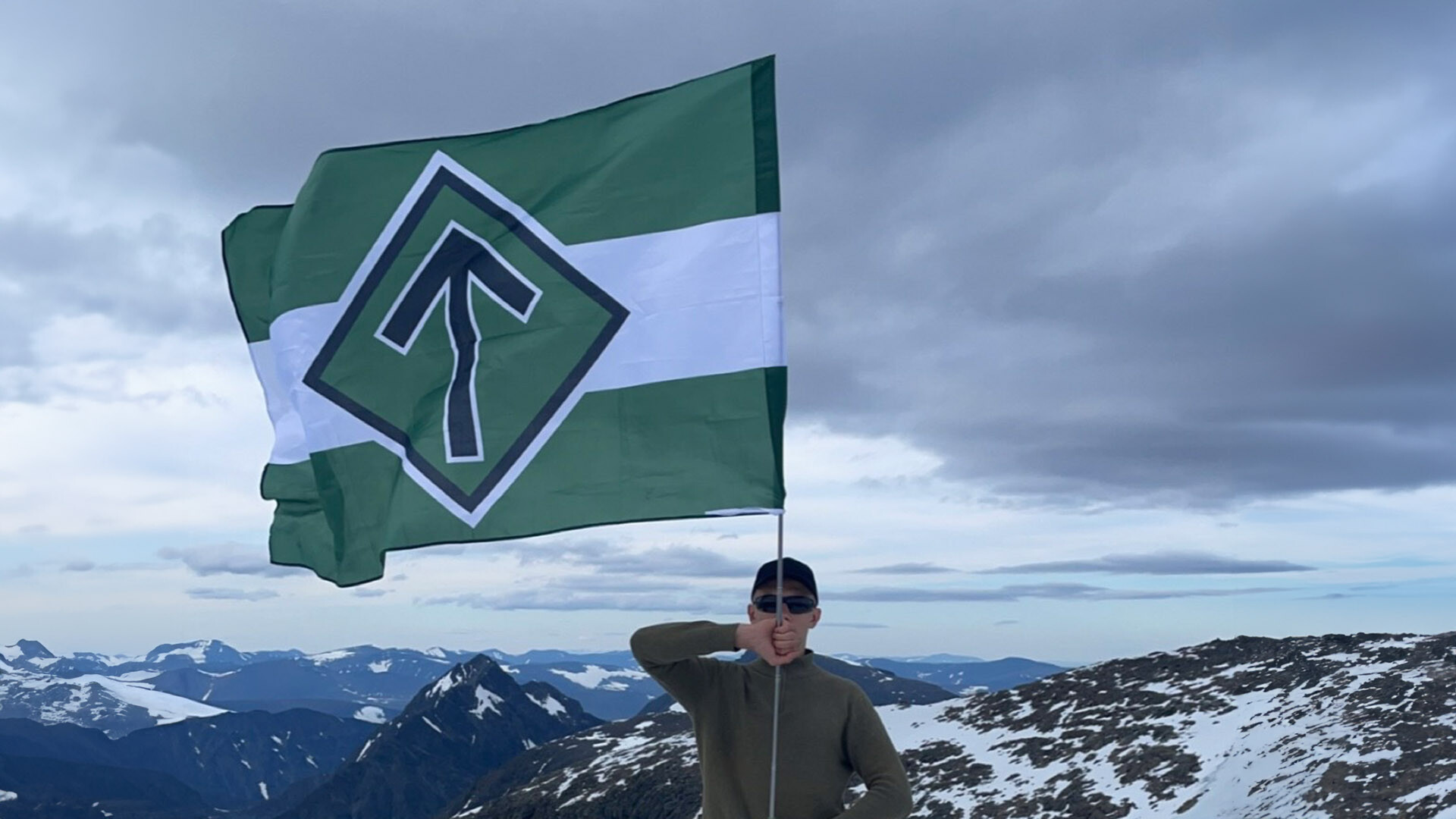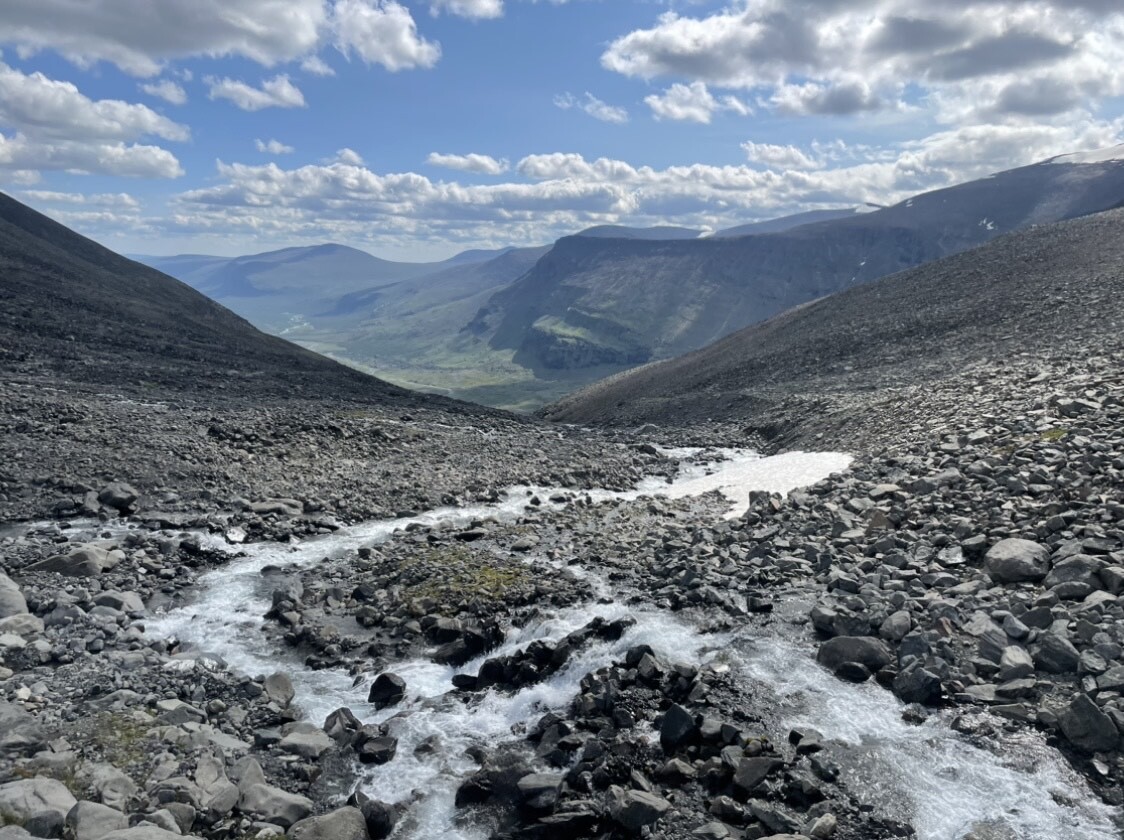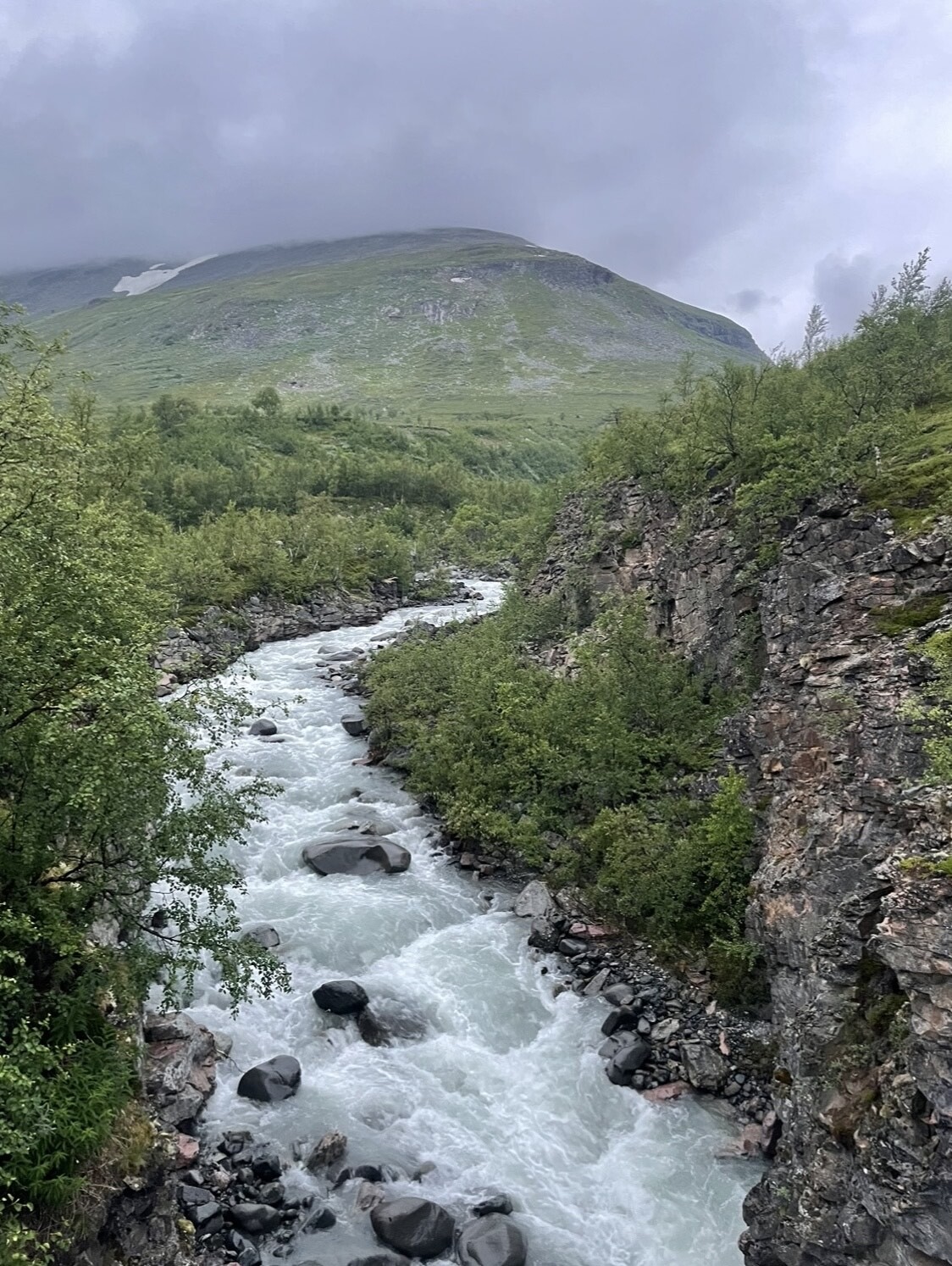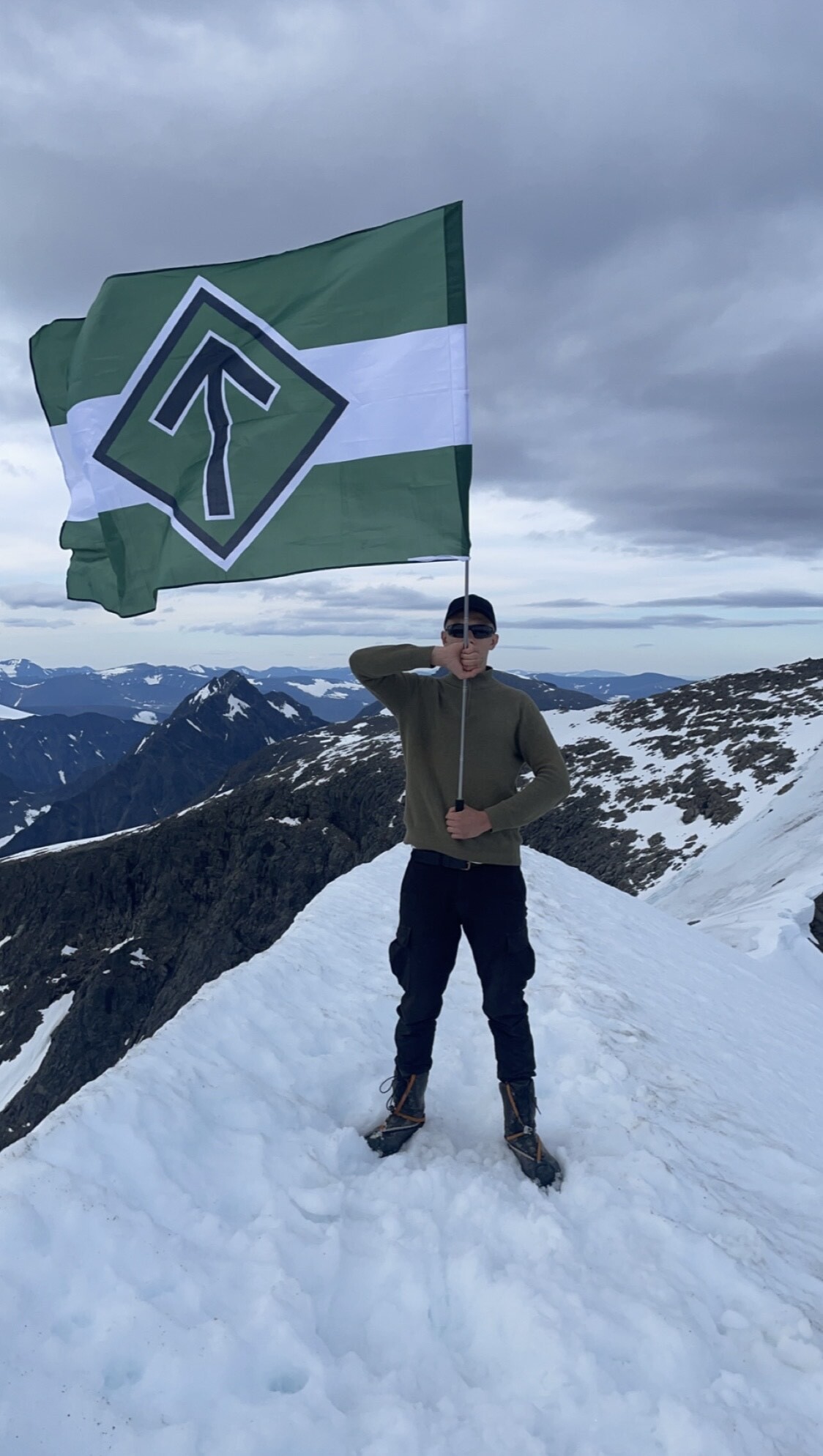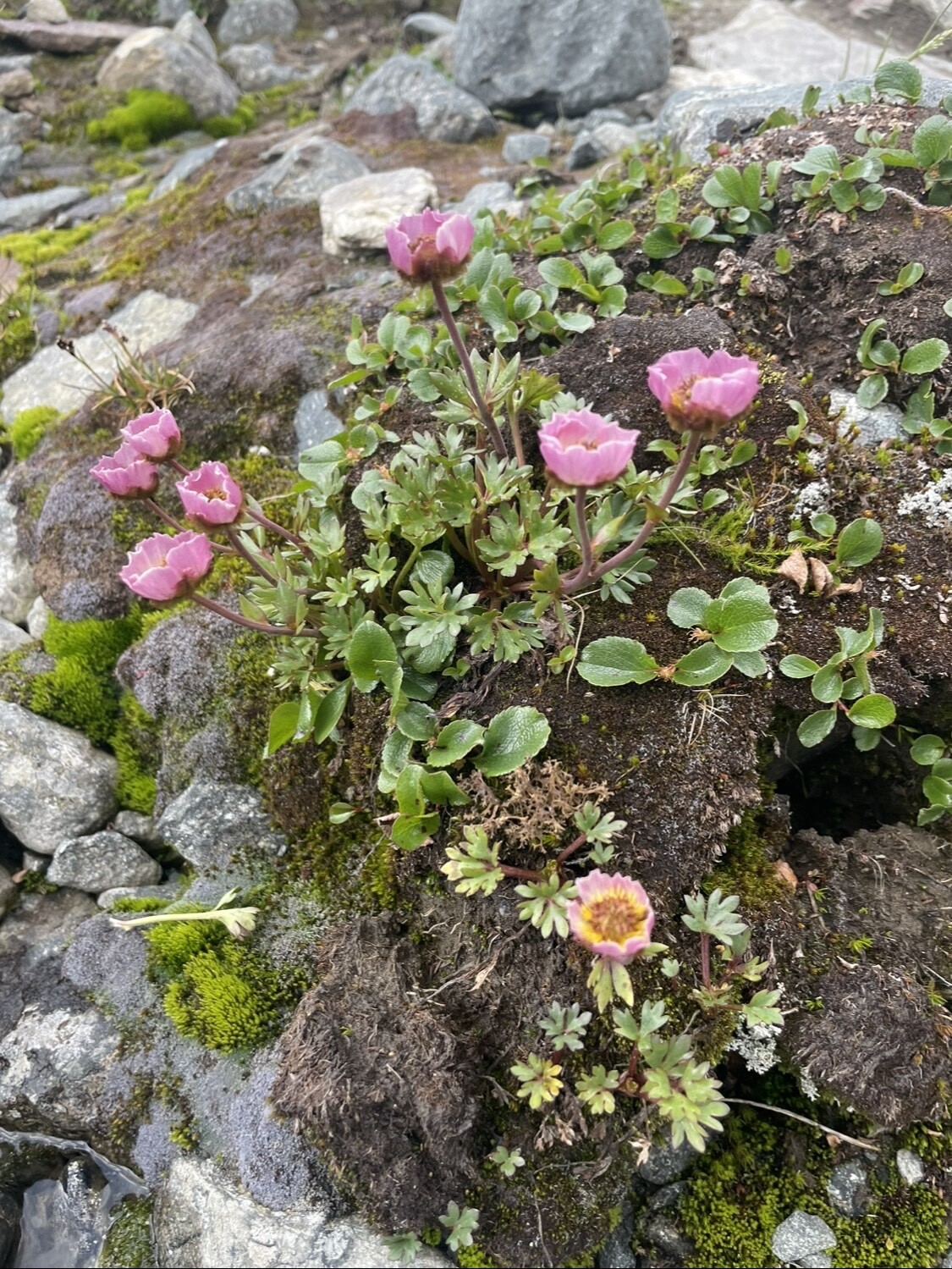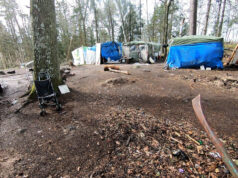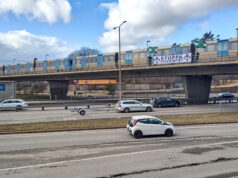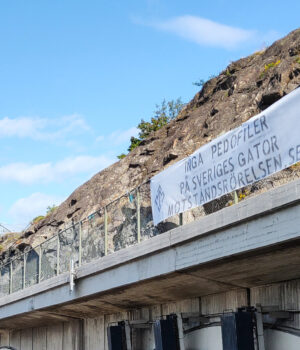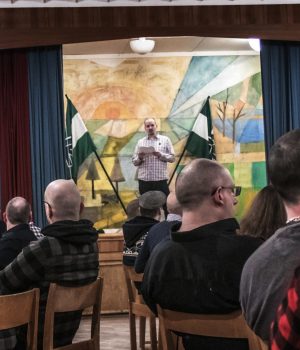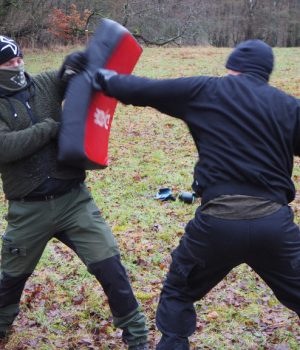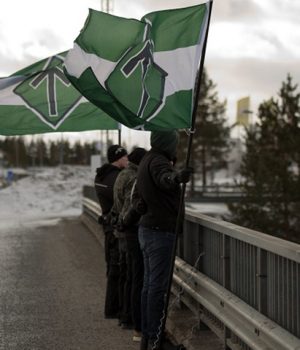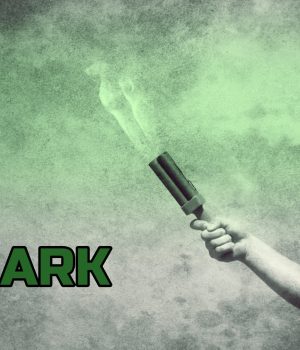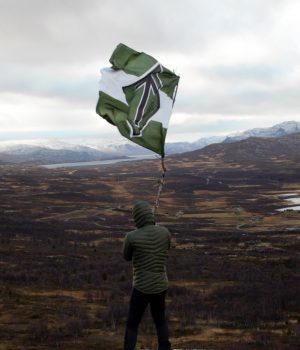RESISTANCE MOVEMENT. Hiking and mountain climbing in the far north.
On Tuesday 11 July, a handful of Nordic Resistance Movement members hiked from the village of Nikkaluokta to the mountain station at the foot of Kebnekaise, the highest mountain in Sweden. With the wind behind them, the comrades traversed dense birch forest and broad marshes, which later gave way to open mountains populated by large stone cairns.
After marching with the hot sun in their faces and consuming many litres of water, the group finally arrived at the mountain station, where they made camp for the night and had a chance to recover ahead of the impending challenge.
The ascent of Kebnekaise began early the next morning, with favourable weather and hiking conditions. After nearly nine long kilometres of walking among fantastically beautiful views of the Nordic mountain landscape, the ascent of Sweden’s highest peak was accomplished.
Once the group had scaled the summit, an extremely beautiful view awaited – one that every Northman should experience at least once in his lifetime. The return journey was relatively calm and did not offer any surprises. It was a great feeling to successfully navigate both the ascent and descent, which required careful footing to prevent slipping.
Thursday was a rest day, which meant socialising with the nice folks who were at the mountain station at the same time as the Resistance men. After many enjoyable and amusing discussions, and with good food in their stomachs, the hike back from the mountain station began in the evening, with the comrades reaching Nikkaluokta on Friday morning.
There, the Nikkaluokta Express bus was waiting to take them back to Kiruna, which marked the end of this challenging, but rewarding, journey.
This was a spontaneous trip at the beginning of the summer holiday, which aimed to test the participants through hiking and new challenges, including the scorching sun, lots of mosquitoes, unreliable equipment, excessively heavy backpacks and the general difficulty of the trip, especially due to all the blisters acquired during the journey.


